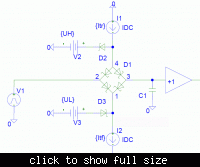djnik1362
Full Member level 2
hi
How can i design a TTL pulse generator with adjustable Rise and Fall ?
Output power can be about 100 mW .
Can i use a high speed D2A ?
Thanks for your support.
How can i design a TTL pulse generator with adjustable Rise and Fall ?
Output power can be about 100 mW .
Can i use a high speed D2A ?
Thanks for your support.
